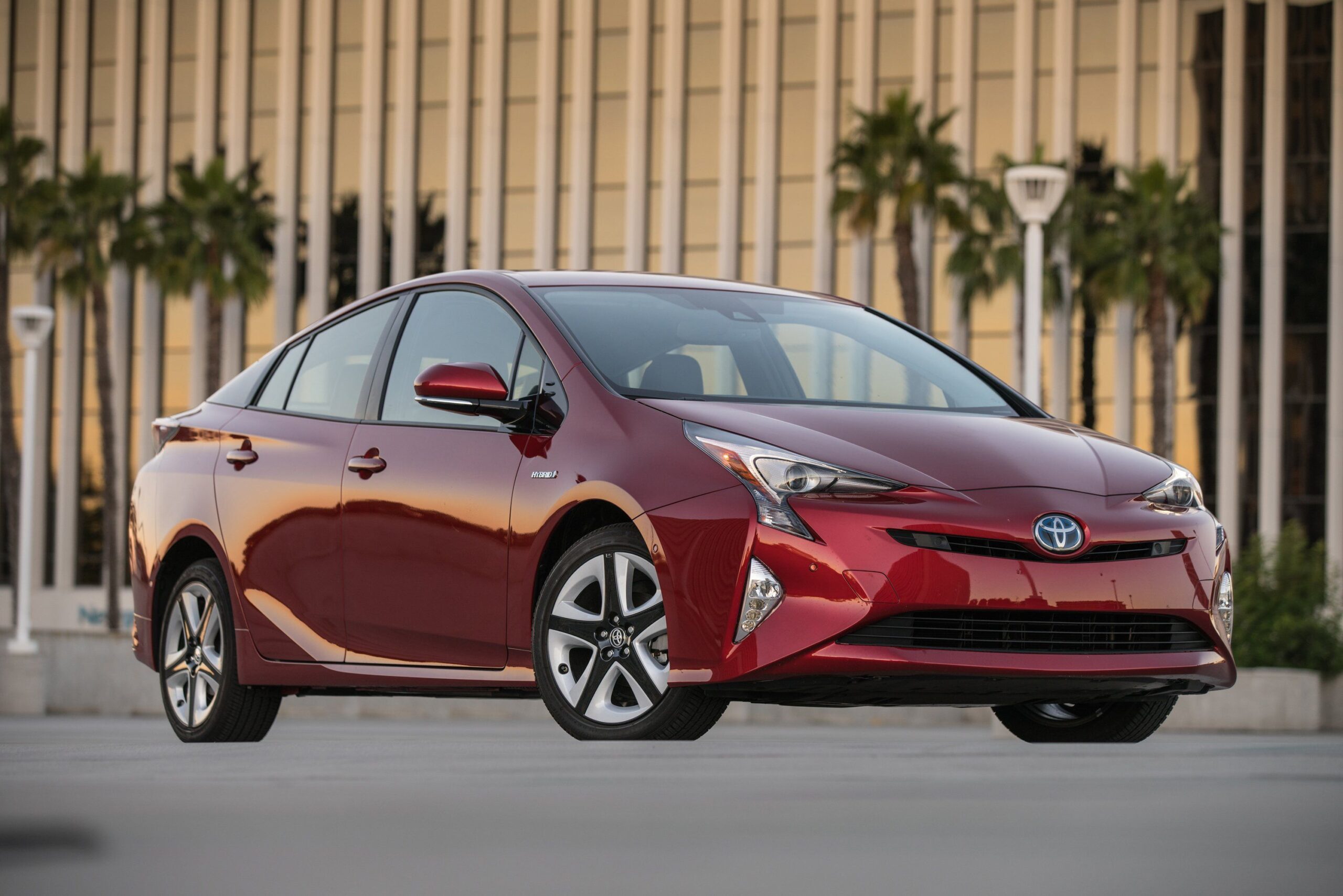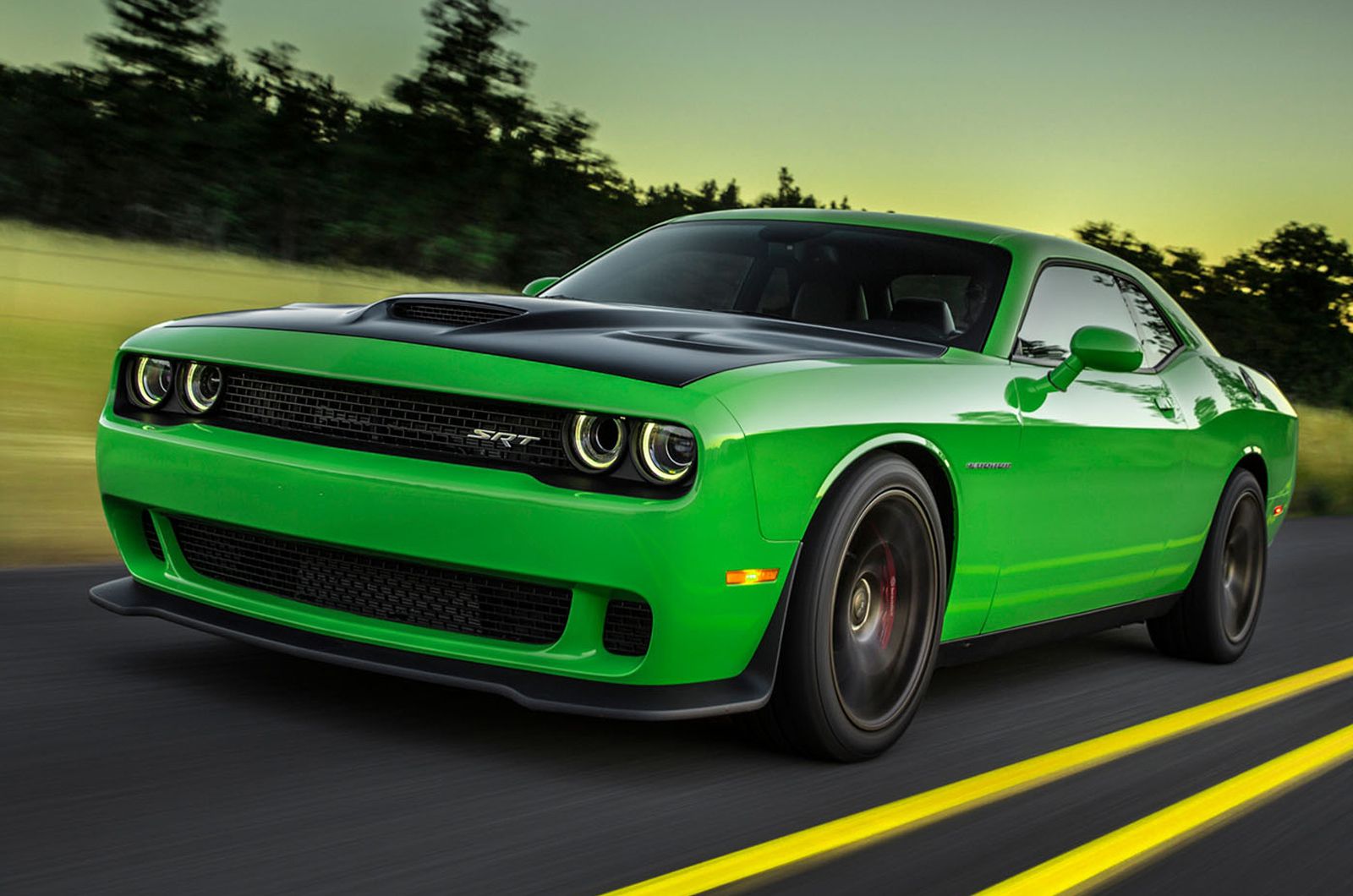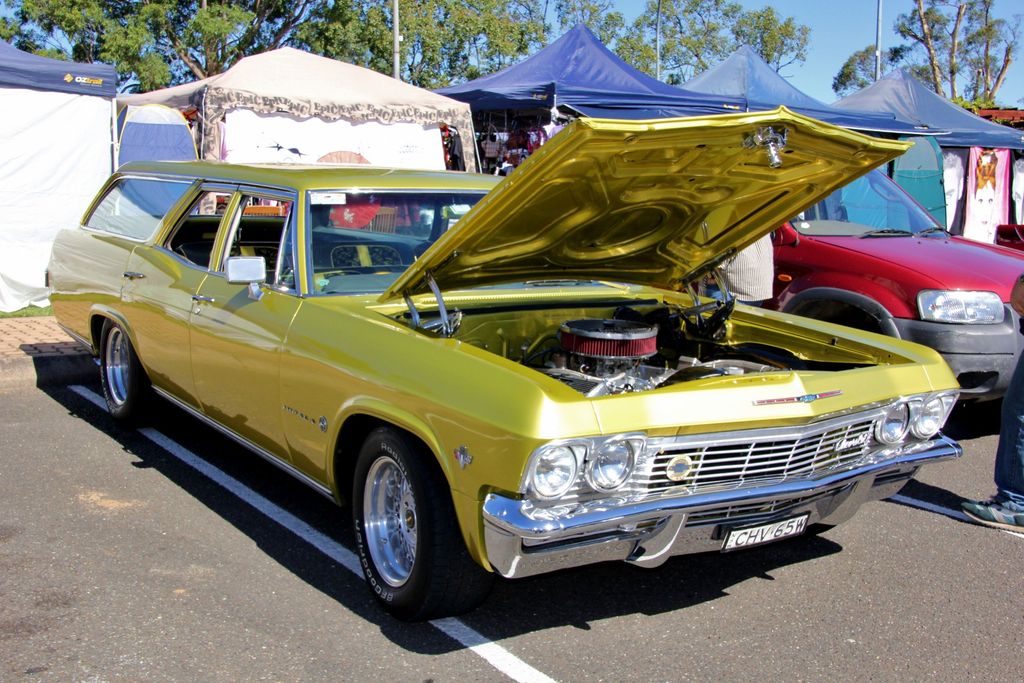
Station wagons have carved out a unique and enduring niche in the automotive landscape, consistently defying trends and proving their worth. For years, these versatile vehicles have been the go-to choice for families and enthusiasts alike, offering an unparalleled blend of an SUV’s practicality with the engaging driving dynamics of a traditional car. While the market has seen a significant shift towards crossovers, the loyal following for wagons persists, driven by a deep appreciation for utility, superior handling, and, critically, longevity.
However, the term “wagon” itself encompasses a broad spectrum of vehicles, and not all are engineered with the same commitment to lasting the test of time. Some models stand as veritable workhorses, racking up hundreds of thousands of miles with little more than routine care, while others, unfortunately, become financial burdens due to persistent mechanical woes and exorbitant maintenance costs. It’s a testament to thoughtful engineering and robust build quality that certain wagons have not only gone the distance but have done so with remarkable grace and dependability.
In an era where automotive lifespans can seem increasingly brief, with new models appearing and disappearing with dizzying speed, there remains a select group of wagons that offer a refreshing counter-narrative. These are the vehicles — both classic and contemporary — that possess the inherent strength, design integrity, and proven track record to easily outlast many of today’s newer offerings. Join us as we delve into the world of these enduring long-roofs, exploring the attributes that make them true stalwarts of the road, capable of delivering years of reliable, satisfying ownership.

1. **Volvo V70 (1998–2010)**Volvo’s legendary reputation for crafting incredibly durable vehicles is not just marketing hype; it’s a legacy meticulously built on models like the V70. This wagon stands as a prime illustration of Scandinavian engineering prowess, widely celebrated for its “tank-like build” and inherent resilience. Owners frequently laud its robust safety features, a hallmark of the Volvo brand, coupled with straightforward mechanicals that eschew unnecessary complexity in favor of proven reliability.
What truly sets the V70 apart in the longevity stakes are its powertrains, particularly the non-turbocharged variants. These engines routinely “surpass 200,000 miles with basic maintenance,” a figure many contemporary vehicles struggle to achieve. Anecdotal evidence from a dedicated ownership base frequently points to “decades of trouble-free ownership,” a testament to the meticulous design and manufacturing quality that defined Volvo during this era. Its availability with all-wheel drive also made it a perennial favorite for drivers in “harsh-weather regions,” reinforcing its utility and ruggedness.
Beyond its raw durability, the V70 offered a driving experience that blended performance with an almost unparalleled level of comfort. While the “engine might lag slightly until the turbocharger spools up” in forced-induction models, once engaged, the surge of power was enough to “pin you back in your seat,” delivering a thrilling, yet controlled, acceleration. The vehicle’s “top-notch” brakes and “precise and linear” steering ensured a confident command over the road, fostering a clear communication between car and driver, allowing for intuitive responses to changing conditions.
The interior experience of a Volvo V70 was, and remains, a benchmark for long-distance comfort. These Swedish machines were “equipped with seats that are arguably the best in the world,” meticulously designed to provide ergonomic support for hours on end, ensuring drivers could “drive one for hours on end and still feel refreshed.” This unwavering commitment to passenger well-being, combined with steadfast performance and safety, explains why Volvo owners consistently return to the brand, year after year, to buy new versions of their favorite cars. They are willing to live with minor ergonomic quirks and conservative styling because of the comfort, performance, and safety that Volvo consistently delivers.
The 1998 V70, which marked a comprehensive overhaul of the 850, brought “more power, greater safety, enhanced comfort, and a touch of updated styling.” Volvo streamlined the front and rear ends, adopting “the front styling from the upcoming C70 coupe to give the cars a sportier and more contemporary appearance.” This generation offered a variety of powertrain options, including a 2.4-liter inline five-cylinder generating 168 horsepower, and a light-pressure turbocharged version boosting output to 190 horsepower for AWD models, exclusively paired with a four-speed automatic. The high-performance T-5 variant, with its 236-horsepower 2.3-liter turbocharged inline five-cylinder, even offered a manual transmission option for enthusiasts seeking maximum engagement. Further safety enhancements included reinforced B-pillars for improved side-impact protection, upgraded seatbelt tensioners, and a redesigned steering column, all contributing to the V70’s status as a paragon of enduring automotive excellence.
Car Model Information: 2002 Volvo V70 2.4T
Name: Volvo V70
Manufacturer: Volvo Cars
Production: 1996–2016
Class: Executive car
BodyStyle: Station wagon,crossover (automobile)
Layout: Front-engine, front-wheel-drive layout,front-wheel drive
Predecessor: Volvo 850
Successor: Volvo V60,Volvo V90
Categories: 2010s cars, All-wheel-drive vehicles, All articles with dead external links, Articles with dead external links from September 2017, Articles with permanently dead external links
Summary: The Volvo V70 is an executive car manufactured and marketed by Volvo Cars from 1996 to 2016 across three generations.
The name V70 combines the letter V, standing for versatility, and 70, denoting relative platform size (i.e., a V70 is larger than a V40, but smaller than a V90).
The first generation (1996–2000) debuted in November 1996. It was based on the P80 platform and was available with front and all-wheel drive (AWD), the latter marketed as the V70 AWD. In September 1997, a crossover version called the V70 XC or V70 Cross Country was introduced. The sedan model was called Volvo S70.
The second generation (2000–2007) debuted in spring 2000. It was based on the P2 platform and, as with its predecessor, was also offered as an all-wheel drive variant marketed as the V70 AWD and as a crossover version initially called V70 XC. For the 2003 model year, the crossover was renamed to XC70. The sedan model was called Volvo S60.
The third generation (2007–2016) debuted in February 2007. It was based on the P3 platform and marketed as the V70 and the XC70. Production of the V70 ended on 25 April 2016, the XC70 continued until 13 May 2016. The sedan model was called Volvo S80.
Get more information about: Volvo V70
Buying a high-performing used car >>>
Brand: Volvo Model: V70
Price: $4,500 Mileage: 127,845 mi.

2. **Subaru Outback (1995–present)**The Subaru Outback has evolved significantly over its long lifespan, transitioning from a “lifted wagon” to what is “technically a crossover in its most recent forms,” yet it has steadfastly retained the fundamental “DNA” that defines a great wagon. Its enduring appeal lies in a trifecta of attributes: a meticulously engineered “all-wheel-drive system,” an inherent “rugged capability” that few rivals can match, and robust “engines that can reach 300,000 miles when properly cared for.” This combination has cemented its status as a beloved vehicle among those who demand reliability and versatility.
Early iterations laid the groundwork, but “models from the mid-2000s onward improved in reliability,” particularly with the adoption of the “2.5-liter non-turbo flat-four engine.” This naturally aspirated powerplant proved to be “more durable than the more complex turbocharged versions,” showcasing Subaru’s commitment to delivering consistent, long-term performance. While its “exterior proportions lean more toward the wagon side,” the Outback’s “elevated ground clearance and higher seating position” cleverly blur the lines with crossovers, offering the best of both worlds without sacrificing its wagon soul.
Though some might argue that the Outback isn’t “particularly exciting to drive” in the traditional performance sense, it excels in other critical areas. It consistently “earns points for its reasonably efficient powertrains,” a significant factor for long-term ownership, alongside its “standard all-wheel drive” which provides unwavering confidence in diverse conditions. The broad “range of available advanced safety features” further elevates its profile as a sensible and secure five-passenger utility vehicle, seamlessly integrating into the daily lives of countless drivers who prioritize safety and practicality.
The 2017 model year, for instance, saw the introduction of a new top-tier Touring trim, available with either the 2.5i four-cylinder or the more potent 3.6R six-cylinder engine. This trim level distinguished itself with premium aesthetic touches like a “dark-gray grille, unique 18-inch wheels, special roof rails, and lower body cladding.” Inside, the luxury continued with a “heated steering wheel, piano black trim, and wood-grain inserts exclusive to the Touring,” demonstrating a dedication to comfort and refinement that complements its rugged capabilities.
In terms of powertrain, the Outback offered a choice between a 175-hp 2.5-liter four-cylinder, which provided “underwhelming performance” but solid economy, and a more robust 256-hp 3.6-liter six-cylinder, available on higher trims for those seeking more power. Both engines utilized a horizontally opposed (flat) design and were mated to a “continuously variable automatic transmission (CVT)” that seamlessly routed power through Subaru’s renowned “standard all-wheel-drive system.” While its “dull handling might be disappointing for those looking for a true wagon replacement,” the Outback’s “more carlike ride and handling characteristics give it an edge over clumsier crossovers,” solidifying its place as an enduring and highly capable wagon.
Car Model Information: 2022 Subaru Outback Touring XT
Name: Subaru Outback
Caption: 2023 Subaru Outback Premium
Manufacturer: Subaru
Production: 1994–present
ModelYears: 1995–present
Assembly: Ota, Gunma
Aka: Subaru Legacy
Class: Mid-size car
BodyStyle: station wagon
Categories: All Wikipedia articles written in American English, All articles with unsourced statements, Articles containing Japanese-language text, Articles with short description, Articles with unsourced statements from April 2012
Summary: The Subaru Outback is an automotive nameplate used by the Japanese automaker Subaru for two different themed vehicles: a Legacy-derived station wagon, the Outback (1994–present, also sold as Legacy Outback (Japanese: スバル・レガシィアウトバック, Hepburn: Subaru Regashi Autobakku) in some markets), and an Impreza-derived off-road themed hatchback, the Outback Sport (1994–2011).
Most versions of the Outback wagon and Outback Sport have had all-wheel drive as standard equipment.
Get more information about: Subaru Outback
Buying a high-performing used car >>>
Brand: Subaru Model: Outback
Price: $31,456 Mileage: 20,000 mi.

3. **Toyota Prius V (2012–2017)**In the pantheon of enduring vehicles, the Toyota Prius V might initially appear as an unconventional choice, given its hybrid powertrain and relatively recent discontinuation. However, this “hybrid wagon” has emphatically “proven to be a standout when it comes to longevity,” largely thanks to the synergistic combination of “Toyota’s hybrid powertrain and station wagon practicality,” resulting in an exceptionally “economical and reliable choice.” Its ability to deliver consistent performance over an extended lifespan positions it firmly among the wagons built to last.
A common concern with hybrid vehicles centers around battery life and replacement costs, but Toyota has largely mitigated these worries. The brand’s “hybrid systems are among the most dependable in the business,” a reputation hard-earned through years of real-world performance. This reliability is underscored by numerous “Prius V owners report exceeding 250,000 miles with little more than routine maintenance,” a remarkable feat for any vehicle, let alone one incorporating advanced hybrid technology. It stands as a testament to Toyota’s engineering philosophy of durability and low cost of ownership.
While it occupied a “relatively small segment,” often finding itself in comparison with vehicles like the Ford C-Max Hybrid, the Prius V consistently “holds its own and remains a solid choice among its peers.” The C-Max might have offered “better acceleration and handling, a more refined cabin, and a more attractive design,” but the Prius V’s core strengths lay elsewhere. It might not have been “the most exciting car to drive,” a common characteristic of many long-lasting, practical vehicles, but its formidable “blend of fuel economy and practicality” made it an undeniable value proposition for drivers prioritizing efficiency and space.
The safety profile of the Prius V further enhances its appeal as an enduring family vehicle. All 2017 models came “equipped with standard features such as antilock disc brakes, stability and traction control, front side airbags, side curtain airbags, a driver knee airbag, and a rearview camera.” For those seeking even greater peace of mind, the Prius V Five model, when fitted with the Advanced Technology package, included a sophisticated “pre-collision safety system which tightens the seatbelts and initiates braking when a collision is deemed unavoidable.”
This advanced safety suite also incorporated “Toyota’s Safety Connect telematics system,” offering crucial services like “emergency assistance and a stolen-vehicle locator.” These comprehensive safety features, combined with its proven hybrid longevity and remarkable fuel efficiency, solidify the Toyota Prius V’s position as a practical and trustworthy wagon that was designed from the ground up to serve its owners reliably for hundreds of thousands of miles, making it a truly enduring option in the hybrid wagon space.
Car Model Information: 2023 Honda Civic EX
Name: Toyota Prius v
Manufacturer: Toyota
Aka: ubl
ModelCode: XW40
Production: May 2011 – March 2021
ModelYears: ubl
Assembly: Toyota, Aichi
Designer: ubl
Class: Compact MPV
BodyStyle: Station wagon
Layout: Front-engine, front-wheel-drive layout
Platform: Toyota MC platform#New MC
Related: Toyota Prius (XW30)
Engine: ubl
Transmission: Epicyclic gearing
Battery: ubl
Wheelbase: cvt
Length: cvt
Width: cvt
Height: cvt
Weight: cvt
Categories: 2020s cars, All articles containing potentially dated statements, All articles with unsourced statements, Articles containing Japanese-language text, Articles containing potentially dated statements from April 2016
Summary: The Toyota Prius v (for versatile), also named Prius α (pronounced as Alpha) in Japan, and Prius+ in Europe and Singapore, is a hybrid gasoline-electric automobile produced by Toyota introduced in Japan in May 2011, in the U.S. in October 2011, and released in Europe in June 2012. The Prius v was unveiled at the January 2011 North American International Auto Show alongside the Prius c Concept, and it is the first Prius variant to be spun off from the Prius platform. According to Toyota the “v” stands for “versatility”. It is a compact MPV with a standard full hybrid drivetrain.
The Prius α was offered in the Japanese market with both nickel–metal hydride battery and lithium-ion battery. The Prius v in the U.S. was offered only with a nickel–metal hydride battery. As of April 2016, global sales totaled about 634,000 units, led by Japan with 428,400 units sold, representing 67.6% of global sales.
Get more information about: Toyota Prius V
Buying a high-performing used car >>>
Brand: Toyota Model: Prius V
Price: $23,541 Mileage: 56,979 mi.

4. **Mercedes-Benz W123 Wagon (1977–1985)**The Mercedes-Benz W123 Wagon is not merely a vehicle; it is an “icon among enthusiasts of classic, long-lasting cars,” a testament to an era when German engineering was synonymous with unyielding durability. This model, particularly its diesel variants, is renowned for its “bulletproof diesel engines” and a design philosophy rooted in “simple, analog engineering.” These attributes collectively contribute to its legendary status, allowing these wagons to “easily run for half a million miles if cared for,” a figure that continues to impress even decades after their production ceased.
Despite their age, the W123 wagons defy the typical high cost of ownership associated with “vintage European car” models. This is largely due to “a loyal fanbase and decent parts availability,” which helps keep upkeep “relatively low.” The commitment of its owners and the accessibility of components ensure that these vehicles can be maintained and enjoyed for generations. It’s a common sight to find these timeless machines “still seen on the road today,” often cherished in “rural areas or enthusiast circles,” serving as daily drivers or weekend cruisers, a vivid illustration of their inherent resilience.
The W123 series itself represented a significant evolutionary step for Mercedes-Benz, launched in January 1976 as the successor to the W115. This new generation boasted “increased overall dimensions and a longer wheelbase,” providing more cabin space and a more commanding presence. Its “more modern design” gracefully moved “away from the angular styling of its predecessor,” introducing contemporary aesthetics like “round headlights paired with inboard fog lamps” on most models, eventually standardizing on “large rectangular headlights” for European markets, while North American versions retained the distinctive round configuration.
The powertrain lineup, carried over from the W115, was further refined for the W123. The robust “3.0-liter 5-cylinder diesel,” previously designated “240D 3.0,” was rebranded “300D” in European markets to align with North American naming conventions, signifying its status as a workhorse engine. Additionally, the 250 models received a “new 2525 cc inline-six engine (Type M123),” which was a short-stroke derivative of the larger 2.8-liter Type M110 six-cylinder. This continuous refinement of already proven mechanicals ensured the W123 upheld Mercedes-Benz’s reputation for engineering excellence and enduring performance.
Beyond the sedan, Mercedes-Benz expanded the W123 line in the spring of 1976 with a stylish coupe variant, built on a shorter wheelbase. This W123C/CE offered different engine options globally, including the 230C/CE and 280C/CE. For the North American market, a specific 300CD version was also made available, catering to local preferences. The simplicity, robust construction, and sheer longevity of the Mercedes-Benz W123 Wagon firmly establish it as a gold standard for enduring automotive design, a vehicle truly built to last for half a century or more with proper care.
Car Model Information: 2023 Honda Civic EX
Caption: 1984 Mercedes-Benz 280 E (W123)
Name: Mercedes-Benz W123
Manufacturer: Daimler-Benz
Related: Mercedes-Benz E-Class
Production: November 1975 – January 1986 , 2,696,915 built , 4-door: 2,375,410, Coupé: 99,884 , Estate: 199,517 , Limousine: 13,700 , Chassis: 1,353 , LWB chassis: 7,020
Predecessor: Mercedes-Benz W114
Successor: Mercedes-Benz W124
Class: Executive car
Layout: FR layout
BodyStyle: sedan (car)
Engine: ubl
Transmission: 722.0 722.1 722.2
Wheelbase: 2795 mm
Abbr: on
Length: 4725 mm
Width: 1784 mm
Height: 1435 mm
Weight: convert
Assembly: Sindelfingen,East London, Eastern Cape,Changchun,Samut Prakarn,TAAP,Thonburi Automotive Assembly Plant Co., Ltd.
Designer: Friedrich Geiger,Bruno Sacco
ModelYears: 1976–1986
Categories: 1980s cars, Articles with short description, CS1: long volume value, CS1 German-language sources (de), CS1 interwiki-linked names
Summary: The Mercedes-Benz W123 is a range of executive cars produced by German manufacturer Mercedes-Benz from November 1975 to January 1986. The W123 models surpassed their predecessor, the Mercedes-Benz W114, as the most successful Mercedes-Benz, selling 2.7 million units before production ended in the autumn of 1985 for the saloon/sedan versions and January 1986 for coupés and estates/station wagons.
Following a slow production build-up during the first year, customers who placed their orders faced a lengthy waiting period of nine to twelve months. A black market emerged for the customers who were willing to pay more for immediate delivery. The slightly used W123 commanded about 5,000 Deutsche Mark premium over its original sale price.
Like its predecessors, the W123 gained the reputation of being well built and reliable. Many taxi companies in Germany chose the W123 due to its reputation of durability and reliability. Reaching 500,000 or more kilometres with only minor mechanical issues was common with W123 used as taxicabs. Once the W123 reached the end of its service life, they were often shipped to Africa and third world countries where they were highly esteemed for their ability to travel on rough roads and to require infrequent maintenance.
W123 production ended in January 1986 with 63 final estates/station wagons rolling out. The most popular single models were the 240 D (455,000 built), the 230 E (442,000 built), and the 200 D (378,000 built).
Get more information about: Mercedes-Benz W123
Buying a high-performing used car >>>
Brand: Mercedes-Benz Model: W123 Wagon
Price: $23,541 Mileage: 56,979 mi.

5. **Honda Accord Wagon (1991–1997)**Although its production run concluded “decades ago,” the Honda Accord Wagon has left an indelible “legacy of reliability” that few other vehicles can rival. Its inherent durability stems from sharing “many components with the sedan,” a platform that is widely acknowledged as “one of the most reliable platforms Honda ever built.” This foundational engineering excellence translated directly into a wagon variant that was both practical and exceptionally robust, solidifying its place among the most enduring vehicles on the road.
The Accord Wagon’s reputation for longevity is not merely anecdotal; “Owners frequently report driving these wagons well past 250,000 miles,” a testament to their meticulously engineered mechanicals. The “naturally aspirated four-cylinder engines are legendary for their longevity,” known for their unwavering performance and minimal fuss. Furthermore, the “overall simplicity of the design makes DIY repairs feasible,” empowering owners to handle basic maintenance and minor fixes themselves, significantly reducing the long-term cost of ownership and fostering a deeper connection with their vehicle.
While the 1995 model year saw the Accord sedan finally offered with a V6 engine, the performance narrative wasn’t always straightforward. Critics noted that the V6 “doesn’t quite match the performance of certain four-cylinder Accord variants,” with the “added weight, different tires, and the inclusion of an automatic transmission” combining to make the V6 version “slower and less agile than the five-speed manual Accord EX.” This observation highlighted the exceptional balance and responsiveness of the four-cylinder manual setups, often lauded for their “engaging nature.”
Indeed, the V6 powertrain was sometimes described as “smooth but uninspiring,” giving the car a “bland personality that feels at odds with the typically engaging nature of other Honda models.” However, this critique mostly applied to a specific engine option, and the core reliability and practicality of the Accord platform remained unchallenged. By 1997, Honda had streamlined its lineup, focusing on the most successful and well-received configurations, although specific models were phased out. The Accord EX with the VTEC engine, for example, stood as a highly desirable trim, proving that a balance of performance, efficiency, and equipment could be achieved.
Ultimately, the “Accord EX with the VTEC engine” emerged as a particularly compelling offering, celebrated for being “fast, efficient, and well-equipped.” Crucially, it was also “genuinely enjoyable to drive,” blending Honda’s characteristic driving dynamics with its legendary dependability. When considering that the “real-world cost of ownership ends up being about half of the sticker price,” the choice became unequivocally clear for many. The Accord, in its various forms including the wagon, stood as “the definitive choice among family sedans, coupes, and wagons,” a truly enduring vehicle that continues to serve as a benchmark for reliability and practical performance.
Car Model Information: 2023 Honda Civic EX
Name: Honda Accord,Seventh generation (CL7-9/CM1-3/CN1-2)
Manufacturer: Honda
Aka: Acura TSX
Production: 2002–2008
Assembly: Sayama,Saitama Prefecture
Designer: Kunihiko Tachibana, Hiroshi Ishibani (2000)
Class: Mid-size
BodyStyle: sedan (automobile)
Layout: Front-engine, front-wheel-drive layout,Front-engine, four-wheel-drive layout
Engine: ubl
Transmission: Automatic transmission
Wheelbase: 2670 mm
Abbr: on
Length: 4665 mm
Width: 1760 mm
Height: 1445 mm
Predecessor: Honda Accord (sixth generation)#Japan,Honda Accord (sixth generation)#Europe,Honda Torneo
Successor: Honda Accord (Japan and Europe eighth generation)
Categories: All articles with unsourced statements, Articles with short description, Articles with unsourced statements from June 2016, CS1 maint: numeric names: authors list, Cars discontinued in 2008
Summary: The seventh-generation Honda Accord for the European and Japanese markets is a mid-size car that was available as a four-door sedan or a five-door station wagon and was produced by Honda from October 2002 (for the 2003 model year) to 2008. It won the 2002-03 Japan Car of the Year upon its launch.
For this generation, the European and Japanese Accords, previously separate models, were consolidated into a single version designed to be more competitive in the European market. It became a top seller in its class in Australia, where over 45,000 sedans were sold between 2003 and 2008. The car was also exported to the United States and Canada, where it was sold as the Acura TSX. Outside North America the first Honda-built diesel engine was offered. In the Japanese market, the Accord was merged into the Torneo range to compete against the Mazda Atenza and Subaru Legacy.
The consolidation of the Japanese and European models was met with some skepticism in Japan at the time, with journalists suggesting Honda was abandoning the Japanese platform in favor of prioritizing foreign markets. Honda suggested that delivering a vehicle achieving that of a “European standard” was in line with what prospective Accord owners in Japan were expecting, compared to buyers of kei cars or compact cars. Compared to its predecessor, the seventh generation features a wider and heavier body, with improvements to aerodynamics, structural rigidity, and tread width. The sedan variant achieves a drag coefficient of 0.26, marking a significant enhancement in aerodynamic efficiency.
Unlike the previous generation, the sedan and wagon variants were developed and released simultaneously. The wagon’s design from the B-pillar rearward was created independently by a separate designer, allowing greater flexibility in its core design elements rather than simply extending the roofline and cargo area.
A variant of the larger North American Accord was sold in Japan as the Honda Inspire to compete in the entry-level luxury sedan class. In markets where both versions of the Accord are sold, such as in New Zealand and Australia, the smaller Japan/Europe-type car is called Accord Euro to distinguish it from the larger North American model.
Get more information about: Honda Accord (Japan and Europe seventh generation)
Buying a high-performing used car >>>
Brand: Honda Model: Accord Wagon
Price: $23,541 Mileage: 56,979 mi.

6. **2025 Mercedes-Benz E 450 4Matic All-Terrain Wagon**Stepping into the modern era of enduring wagons, the 2025 Mercedes-Benz E 450 4Matic All-Terrain Wagon unequivocally establishes itself as a contemporary torchbearer for longevity and luxury. The E-Class Wagon is not merely a new model; it is “an institution in the luxury wagon space, going back decades,” carrying forward a legacy of sophistication, robust engineering, and practical elegance. This latest iteration signals a distinct shift in focus for the U.S. market, with the “All-Terrain model” becoming the “primary spec,” blending off-road capability with signature Mercedes-Benz refinement.
This wagon embodies a modern interpretation of endurance, combining advanced technology with the proven build quality that the three-pointed star represents. Powering this versatile machine is a “375-hp mild-hybrid drivetrain,” a sophisticated system that marries a traditional combustion engine with electrical assistance for enhanced efficiency and smooth power delivery. This powertrain, coupled with “standard all-wheel drive (AWD),” ensures confident handling and traction across a variety of driving conditions, from urban commutes to unpaved trails, reinforcing its “All-Terrain” designation.
While a “high-performance AMG model is expected to arrive eventually,” for now, the E 450 4Matic All-Terrain stands as the confirmed and compelling offering. Its design ethos reflects a vehicle built not just for immediate appeal, but for sustained relevance and performance, offering the spaciousness and practicality of a wagon without the bulk often associated with SUVs. This careful balance between utility and driving dynamics makes it an attractive proposition for those who appreciate a vehicle that can truly do it all, comfortably and reliably, for many years to come.
The inherent quality of Mercedes-Benz vehicles, especially in their E-Class line, suggests a commitment to materials and construction that translates into long-term durability. While it represents a significant investment, the expectation is that this wagon, like its revered predecessors such as the W123, will reward its owners with a premium driving experience and robust service life. It offers a contemporary answer to the question of what constitutes an enduring wagon, blending luxurious appointments with genuine capability and the promise of lasting performance.
The 2025 E 450 4Matic All-Terrain Wagon stands as a testament to the fact that enduring design and engineering are still paramount in the luxury segment. Its ability to navigate diverse terrains with confidence, provide a refined driving experience, and offer ample cargo and passenger space positions it as a true leader in the modern wagon market. For those seeking a vehicle that seamlessly integrates daily practicality with luxury and a heritage of longevity, this Mercedes-Benz is an impeccable choice, designed to outlast and outperform for the discerning owner.
While the allure of traditional SUVs continues to dominate the automotive landscape, a select group of contemporary wagons brilliantly defies the trend. These aren’t just mere conveyances; they are meticulously engineered machines, pushing boundaries in performance, luxury, and sustainable technology, all while upholding the fundamental wagon virtues of practicality and longevity. They represent the vanguard of enduring design, offering discerning drivers a compelling alternative that refuses to compromise on utility, efficiency, or exhilarating driving dynamics. From high-performance beasts to sophisticated electric marvels, these five models exemplify the continued relevance and evolution of the long-roof body style in today’s increasingly diverse market.
Car Model Information: 2023 Honda Civic EX
1: Gorden Wagener
2: Robert Lešnik
3: Torben Ewe (light design)
4: Andreas Franke (interior design)
Name: Mercedes-Benz E-Class (W214)
Manufacturer: Mercedes-Benz Group
Production: May 2023 – present
ModelYears: 2024–present
Designer: collapsible list
Framestyle: border:none; padding:0;
Assembly: ubl
Related: ubl
Platform: Mercedes-Benz MRA platform
Drivetrain: ubl
Battery: ubl
Class: Executive car
BodyStyle: Saloon (car)
Predecessor: Mercedes-Benz E-Class (W213)
Motor: ubl
Engine: ubl
Transmission: Mercedes-Benz 9G-Tronic transmission
Length: cvt
Width: cvt
Height: cvt
Wheelbase: cvt
Weight: cvt
ModelCode: W214 (Saloon) , V214 (LWB) , S214 (Wagon) , X214 (All Terrain)
Categories: 2020s cars, All-wheel-drive vehicles, All Wikipedia articles written in British English, Articles with short description, CS1 Korean-language sources (ko)
Summary: The sixth generation of the Mercedes-Benz E-Class executive car is a lineup consisting of three body styles, the W214 sedan, S214 estate, and the X214 all terrain estate, which are vehicles produced by German luxury vehicle manufacturer Mercedes-Benz Group since 2 May 2023. Available exclusively in mild hybrid and plug-in hybrid variants, the E-Class has been available since August 2023 in the UK. Estate variants will come in December 2023. Models years for all body styles are to start in 2024.
As with the last generation, the W214 will receive a long-wheel base model internally designated V214 replacing the V213, assembled and sold locally at the Beijing Benz factory in Beijing, China.
Get more information about: Mercedes-Benz E-Class (W214)
Buying a high-performing used car >>>
Brand: Mercedes-Benz Model: E 450 4Matic All-Terrain Wagon
Price: $23,541 Mileage: 56,979 mi.
Read more about: Unveiling the Real-World MPG Victors: A Deep Dive into Hybrids and EVs That Outperform Their EPA Estimates

7. **2025 Audi A6 allroad**Moving beyond its predecessor, the 2025 Audi A6 allroad steps boldly into the luxury wagon arena, delivering a potent blend of upscale features and practical versatility. This model, priced from $71,795, distinguishes itself as a more powerful and luxurious offering compared to the discontinued A4 allroad. It’s a testament to Audi’s commitment to providing a sophisticated driving experience without sacrificing the robust capabilities expected from an allroad variant, proving that a wagon can indeed be both elegant and adventurous.
Beneath its refined exterior, the A6 allroad is powered by a 335-horsepower turbocharged V6 mild-hybrid powertrain, a sophisticated system designed for both brisk performance and enhanced efficiency. This engine works in seamless harmony with Audi’s renowned quattro all-wheel drive and a responsive seven-speed dual-clutch automatic transmission, ensuring quick and smooth power delivery in all conditions. Its adaptive air suspension further elevates its capability, allowing the vehicle to intelligently adjust ride height for navigating rough terrains or lowering for optimized high-speed stability, making it a truly adaptable companion for any journey.
The cabin of the A6 allroad is a quintessential Audi experience: meticulously assembled, tech-forward, and remarkably hushed at cruising speeds. Standard amenities include a premium Bang & Olufsen surround sound system, a panoramic sunroof that bathes the interior in natural light, tri-zone climate control for personalized comfort, and configurable digital gauges alongside dual infotainment screens. Leather seating and sophisticated ambient lighting complete the luxurious ambiance. Positioned as a formidable luxury SUV alternative, the A6 allroad masterfully blends the refined driving dynamics of a car with an undeniable aesthetic appeal that undeniably “looks like money.”
Car Model Information: 2023 Honda Civic EX
Name: Audi A6
Caption: 2025 Audi A6 (C9)
Manufacturer: Audi AG
Production: 1994–present,2000–present (China)
Class: Executive car
BodyStyle: Sedan (car)
Layout: longitudinal engine,FF layout
Sp: uk
Predecessor: Audi 100
Categories: 2000s cars, 2010s cars, 2020s cars, All-wheel-drive vehicles, All Wikipedia articles written in British English
Summary: The Audi A6 is an executive car manufactured by the German company Audi since 1994. Now in its sixth generation, the successor to the Audi 100 is manufactured in Neckarsulm, Germany, and is available in saloon and estate configurations, the latter marketed by Audi as the Avant. Audi’s internal numbering treats the A6 as a continuation of the Audi 100 lineage, with the initial A6 designated as a member of the C4-series, followed by the C5, C6, C7, C8 and the C9. The related Audi A7 is essentially a Sportback (liftback) version of the C7-series and C8-series A6 but is marketed under its own separate identity and model designation.
All generations of the A6 have offered either front-wheel-drive or Torsen-based four-wheel-drive, marketed by Audi as their quattro system. The A6 has also been used as the basis for the company’s Allroad models since 1999.
Get more information about: Audi A6
Buying a high-performing used car >>>
Brand: Audi Model: A6 allroad
Price: $23,541 Mileage: 56,979 mi.
Read more about: Seriously Where Did They Go? 9 Classic Sedans That Vanished From Our Streets.
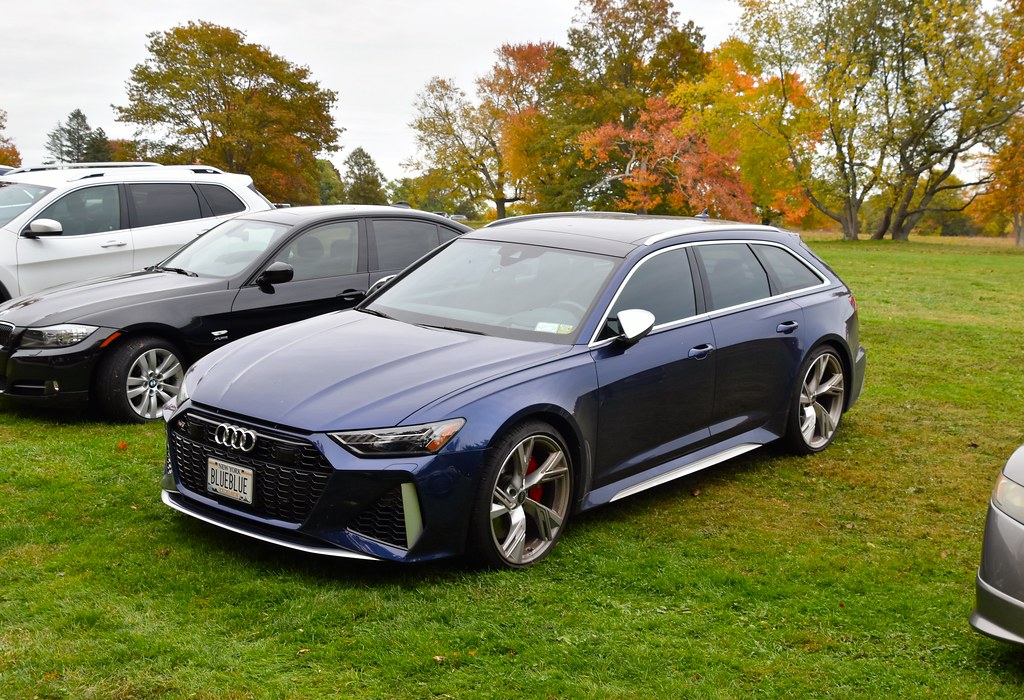
8. **2025 Audi RS 6 Avant**For those who refuse to choose between family functionality and supercar-level thrills, the 2025 Audi RS 6 Avant stands as the ultimate expression of a performance wagon. It’s an intoxicating blend of blistering speed and everyday utility, offering an uncompromised driving experience that few other vehicles, regardless of segment, can match. This isn’t just a fast wagon; it’s a visceral statement on wheels, defying expectations and redefining what a long-roof vehicle is capable of.
At the heart of this beast is a twin-turbocharged 4.0-liter V8 engine, unleashing a staggering 621 horsepower. This immense power propels the RS 6 Avant from zero to 60 mph in a breathtaking 3.3 seconds, with its top speed electronically limited to 155 mph—though the potential for more is clearly evident. Such figures place it firmly in the supercar echelon, yet it retains the practical cargo space and comfortable seating expected of a premium Audi wagon. It’s a machine engineered for exhilaration, where every press of the accelerator delivers an immediate and profound surge of power.
Adding an even sharper edge to the lineup for 2025 is the RS 6 Avant GT. This exclusive variant features a host of carbon fiber body parts, including a distinctive double rear wing spoiler, further enhancing its aerodynamic prowess and aggressive stance. Inside, a unique interior complements its performance-focused exterior, with buyers offered a choice of Nardo Gray, Mythos Black, or a striking livery package inspired by the late 1980s IMSA GT race car, the Audi 90 GTO. Limited to a mere 660 units, the RS 6 GT is a true collector’s item, offering an unparalleled level of exclusivity and track-ready performance in a practical package.
Read more about: Behind the Chrome: 14 Major Automotive Scandals That Defined an Industry’s Legacy and Consumer Trust
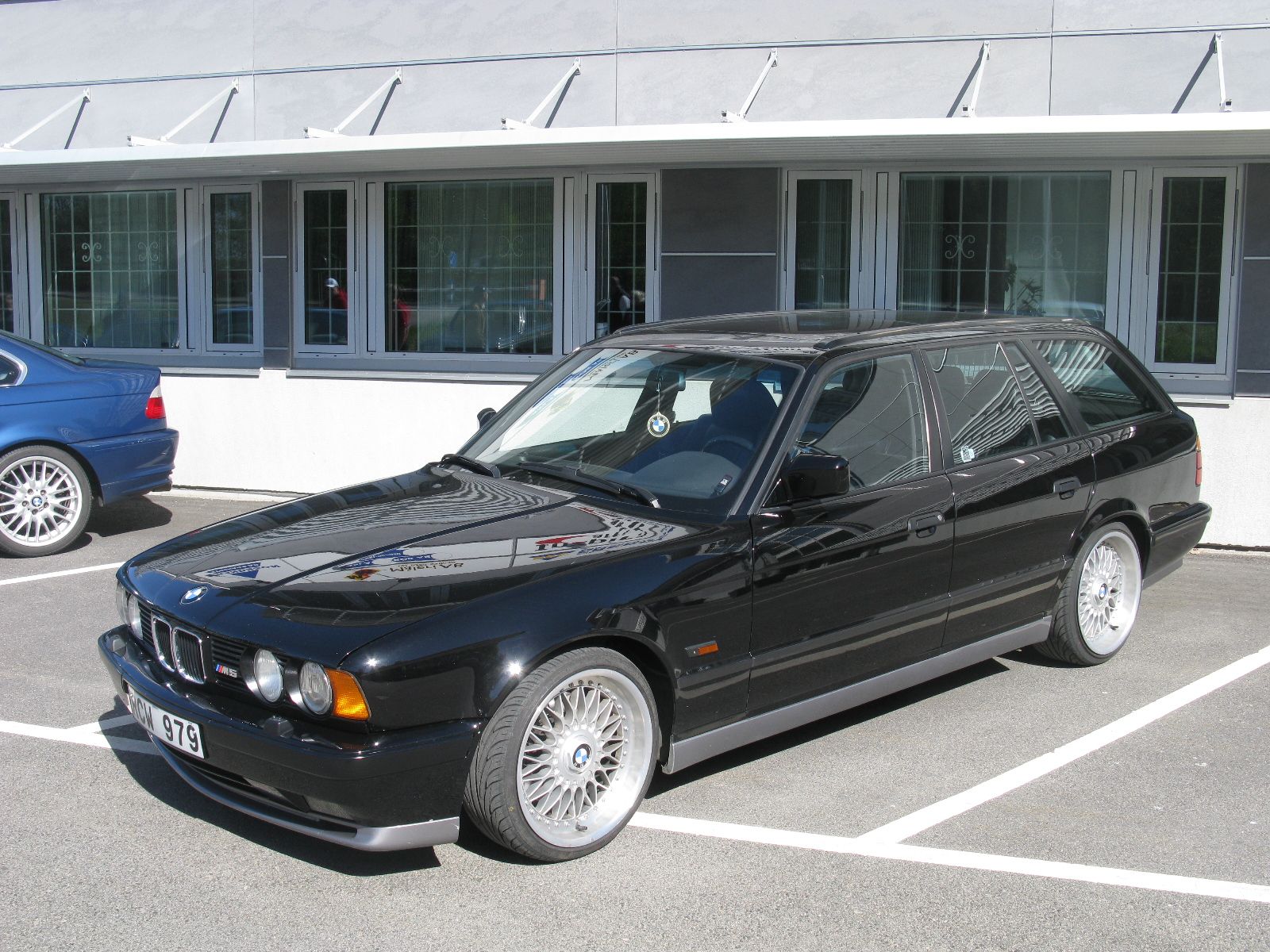
9. **2025 BMW M5 Touring**Emerging as a formidable contender in the superwagon segment, the all-new 2025 BMW M5 Touring has been unveiled as an absolute beast, commanding attention with its astonishing performance and surprising practicality. BMW has masterfully engineered this vehicle to blur the lines between an ultra-high-performance machine and a genuinely versatile daily driver, creating a compelling argument for those who demand the best of both worlds without compromise. Its sheer power and innovative drivetrain represent a significant leap forward in the performance wagon category.
Under the hood, the M5 Touring boasts a plug-in hybrid drivetrain that generates a colossal 717 horsepower and 738 pound-feet of torque. This sophisticated powertrain not only delivers eye-watering acceleration, achieving a sprint from zero to 60 mph in a mere 3.5 seconds, but also offers a practical 25 miles of all-electric range. This unique combination makes it not just a superwagon, but a remarkably efficient and adaptable one, capable of silent, emissions-free urban commutes before unleashing its full fury on open roads.
Despite its athletic prowess, the new M5 Touring makes no sacrifices in terms of utility. With a substantial 57.6 cubic feet of cargo space, it nearly matches the capacity of a typical compact SUV, yet it does so without the inherent height or bulk that often characterizes those vehicles. While its curb weight of 5,530 pounds means it’s hardly svelte, this heft contributes to its planted feel and luxurious ride quality. On specs alone, the 2025 BMW M5 Touring immediately positions itself as one of the most impressive and capable wagons available in America today, setting a new benchmark for performance and practicality.
Car Model Information: 2023 Honda Civic EX
Name: BMW M5
Caption: F90 M5 (left) and E28 M5 (right)
Manufacturer: BMW M
Production: 1984–present
Class: Executive car
Layout: Front-engine, rear-wheel-drive,(1984–1995, 1998–2016)
Related: BMW 5 Series,BMW M6
Categories: 1990s cars, 2000s cars, 2010s cars, 2020s cars, All Wikipedia articles written in British English
Summary: The BMW M5 is a high-performance version of the BMW 5 Series automobile developed by BMW’s motorsport division, BMW M GmbH, built from 1992 to 1995, 2006 to 2010, and since 2024. The M5 has continuously been produced in the saloon body style, in some countries also as a estate.
The first M5 model was hand-built beginning in late 1984 on the E28 535i chassis with a modified engine from the M1 that made it the fastest production saloon at the time. M5 models have been produced for every generation of the 5 Series since 1984, with occasional gaps in production (1995 to 1998, 2023 to 2024).
Get more information about: BMW M5
Buying a high-performing used car >>>
Brand: BMW Model: M5 Touring
Price: $23,541 Mileage: 56,979 mi.
Read more about: Remember These? 13 Rides That Went From Sought-After to Stale.
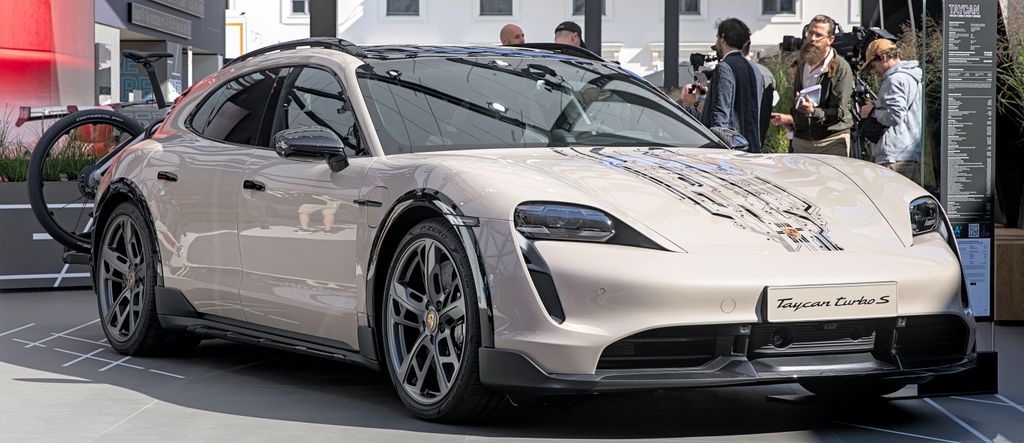
10. **2025 Porsche Taycan Cross Turismo**In a class of its own, the 2025 Porsche Taycan Cross Turismo redefines the all-electric wagon, presenting a vehicle that is as seductively styled as it is electrifyingly potent. As Porsche’s sole all-electric long-roof offering, it masterfully combines the undeniable aesthetic appeal characteristic of the brand with groundbreaking EV performance and genuine practicality. This is the electric wagon designed for individuals who possess a profound hunger for speed alongside an unyielding appreciation for luxury and advanced automotive engineering.
Performance in the Taycan Cross Turismo ranges from a robust minimum of 429 horsepower in the Taycan 4 Cross Turismo, ascending to an astonishing maximum of 938 horsepower in launch control mode with Overboost in the top-spec Taycan Turbo S Cross Turismo. These figures are not just impressive; they are transformative, delivering instant, relentless acceleration that pins occupants back in their seats. The advanced all-electric powertrain ensures not only blistering straight-line speed but also the refined and engaging driving dynamics that are hallmarks of any Porsche, making every journey an event.
Beyond its sheer power, the Cross Turismo body style offers enhanced versatility with its extended roofline and increased cargo capacity, making it a highly practical choice for active lifestyles. Its distinctive design, coupled with Porsche’s meticulous attention to detail in both exterior and interior execution, ensures that it stands out in any setting. This fusion of cutting-edge electric technology, high-performance capability, and practical wagon utility solidifies the 2025 Porsche Taycan Cross Turismo as a true pioneer, proving that electric vehicles can fully embrace and elevate the enduring appeal of the wagon form.
Car Model Information: 2023 Honda Civic EX
Name: Porsche Taycan
ModelCode: Type 9J1
Manufacturer: Porsche
Production: 2019–present
Assembly: Stuttgart
Designer: Emiel Burki
Class: Executive car
BodyStyle: Sedan (automobile),shooting brake
Platform: Volkswagen Group MSB platform#J1 Platform Models
Engine: Synchronous motor#Permanent-magnet
Layout: Rear-motor, rear-wheel-drive
Transmission: 1-speed direct-drive (front 8.05:1),2-speed automatic (rear; 16:1 and 8.05:1)
Battery: lithium-ion battery,lithium-ion battery
ElectricRange: cvt
Charging: Direct current,Direct current,Alternating current,Alternating current
Length: Convert
Wheelbase: Convert
Width: Convert
Height: Convert
Weight: Convert
Related: Audi e-tron GT
Sp: uk
Categories: 2020s cars, All-wheel-drive vehicles, All articles with unsourced statements, Articles with short description, Articles with unsourced statements from January 2025
Summary: The Porsche Taycan is a battery electric luxury sports sedan and shooting brake car produced by German automobile manufacturer Porsche. The concept version of the Taycan, named the Porsche Mission E, debuted at the 2015 Frankfurt Motor Show. Four years later, the production Taycan was revealed at the 2019 Frankfurt Motor Show. As Porsche’s first series production electric car, it is sold in several variants at different performance levels, and may spawn further derivatives in future models. It is built on the J1 electric car platform shared with the similarly shaped Audi e-tron GT.
The name “Taycan” (/taɪ-kan/) is a reference to the steed on the coat of arms of the city of Stuttgart, found on the Porsche crest. In Turkish, tay means colt or young horse, and can means lively. The “Turbo” name used in the higher trims, being electrically powered, does not mean to have turbochargers, but to have “increased power”.
Get more information about: Porsche Taycan
Buying a high-performing used car >>>
Brand: Porsche Model: Taycan Cross Turismo
Price: $23,541 Mileage: 56,979 mi.
Read more about: I’m an Insurance Agent: These 14 Vehicles Carry the Highest Risk Premiums of 2025
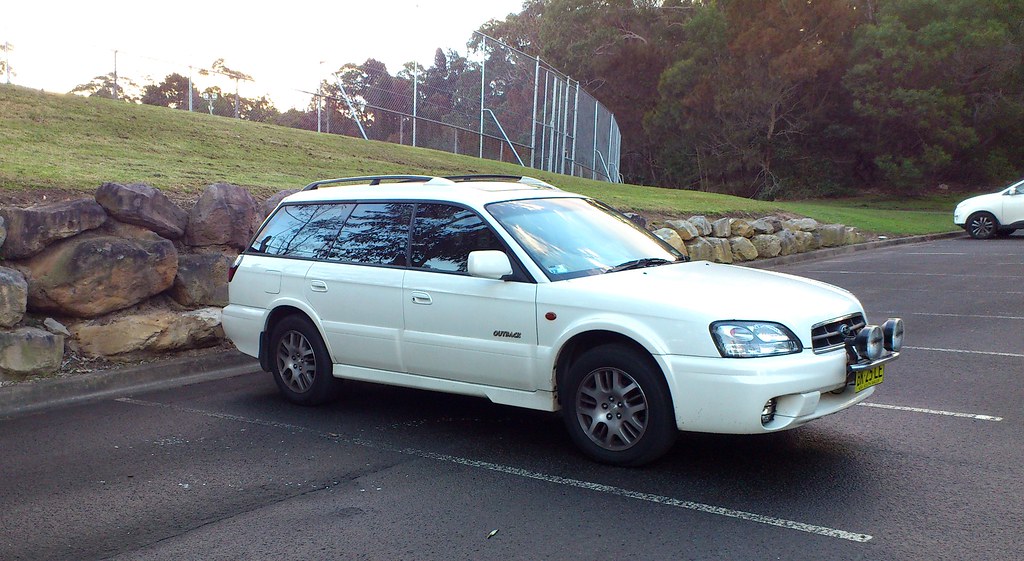
11. **2025 Subaru Outback**Stepping away from the realm of wildly powerful and ultra-luxurious wagons, the 2025 Subaru Outback remains an absolutely stellar choice, steadfastly affirming its position as the do-everything default for many American drivers. It is the definitive wagon lover’s answer to the pervasive SUV onslaught, offering a harmonious blend of rugged capability, everyday practicality, and the reassuring reliability that has defined the brand for decades. This latest iteration continues to embody the core values of endurance and versatility that have made the Outback a perennial favorite.
At its core, the 2025 Outback maintains its signature commitment to all-weather, all-terrain confidence. Its standard Symmetrical All-Wheel Drive system, combined with an impressive 8.7 inches of ground clearance—or a formidable 9.5 inches on the Wilderness trim—equips it to tackle dirt roads, deep ruts, and challenging winter conditions with remarkable ease. Power is delivered by a base 2.5-liter flat-four engine, producing 182 horsepower and 176 pound-feet of torque, offering adequate performance for daily commuting and light off-road excursions. For those requiring more assertive power, an optional 2.4-liter turbocharged engine is available, delivering 260 horsepower and 277 pound-feet of torque, providing a real punch for mountain passes and heavily loaded family trips.
The interior of the 2025 Outback is designed with honest, usable space for five passengers and their gear, ensuring comfort and utility on long hauls. Upper trims elevate the experience with premium features such as Nappa leather upholstery, ventilated front seats, a Harman Kardon audio system, wireless smartphone integration, and a convenient hands-free liftgate. Furthermore, Subaru’s EyeSight driver assistance system comes standard, enhancing safety and peace of mind. Starting at an accessible $29,995, the Outback represents the most affordable gateway to a truly capable, four-season wagon lifestyle, making it an enduring and intelligent choice for a broad spectrum of drivers.
Read more about: Are You Driving a ‘Selfish’ Car? Unpacking 9 Vehicles With Unflattering Owner Stereotypes That Everyone Secretly Thinks
The journey through the world of enduring wagons, both classic and contemporary, reveals a consistent truth: these vehicles offer a compelling combination of attributes that SUVs often struggle to match. They deliver car-like handling, a low load floor for easy cargo access, and practical utility, all without the bulk or compromised driving dynamics of many crossovers. Whether it’s the proven resilience of a vintage Mercedes, the modern luxury of an Audi allroad, the electrifying performance of a Porsche Taycan, or the unwavering dependability of a Subaru Outback, these wagons prove that thoughtful engineering and a commitment to utility can transcend fleeting trends. For drivers who value true capability, lasting quality, and a genuinely engaging driving experience, the enduring wagon remains not just a viable option, but often, the superior choice. These are the stalwarts of the road, built to deliver satisfaction for years, even decades, to come.

